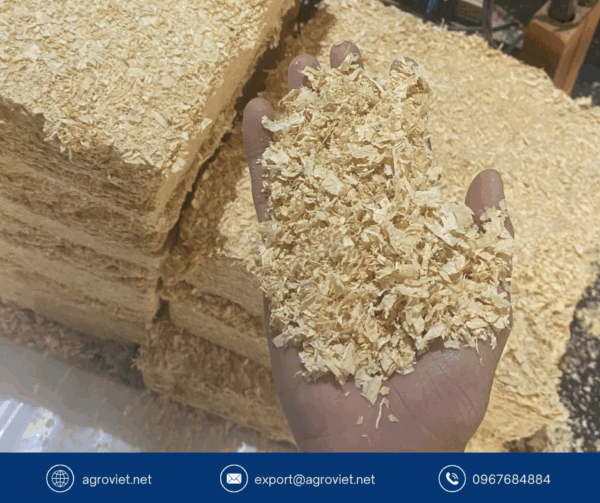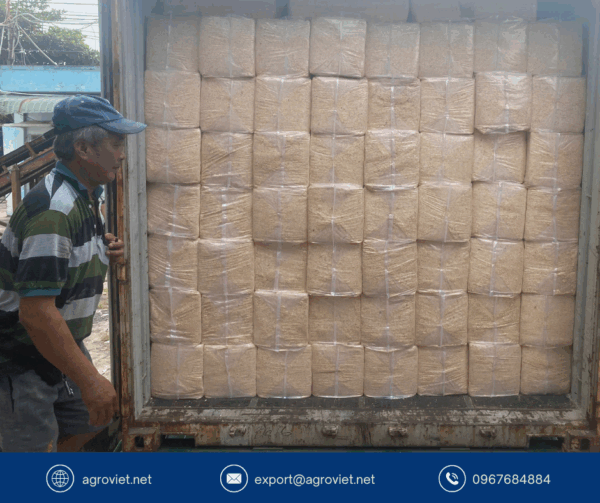The Science Behind Wood Shavings Insulation: How It Retains Heat in Barn Floors

In the depths of winter, maintaining warmth in livestock barns is critical to protect animals from cold stress, which can lead to reduced productivity, increased disease, and mortality rates of 5-8% in poorly insulated environments. Barn floors, often made of concrete or packed earth, are major sources of heat loss, chilling animals and increasing energy costs. Wood shavings, with their exceptional insulating properties, high absorbency, and ability to create a thermal barrier, are the optimal bedding choice for retaining heat in barn floors. This post delves into the scientific principles behind wood shavings’ insulation, supported by a realistic case study, and subtly highlights their synergy with wood pellets for enhanced performance.
The Challenge of Heat Loss in Barn Floors
Barn floors, typically made of concrete (thermal conductivity ~1.4 W/m·K) or packed earth (~0.8 W/m·K), are highly conductive, rapidly drawing heat away from animals through direct contact. In freezing temperatures, this can cause cold stress, weakening immune systems and increasing risks of diseases like pneumonia or mastitis. Studies on livestock housing show that uninsulated floors can lower barn temperatures by 10-15°F, contributing to 5-8% mortality rates in cattle, goats, and sheep during winter. Effective bedding is essential to create a thermal barrier, reducing heat loss and maintaining a warm, healthy environment.
Why Straw Falls Short for Floor Insulation
Straw is a traditional bedding choice due to its affordability, but it fails to effectively insulate barn floors:
-
Poor Insulation: Straw’s thermal conductivity (~0.3 W/m·K) is higher than wood shavings, and it loses insulating power when compacted, allowing heat to escape.
-
Limited Absorbency: Absorbing only 1.5-2.5 times its weight in moisture, straw becomes wet, increasing thermal conductivity and chilling animals.
-
Compaction: Straw flattens under livestock weight, reducing air pockets and exposing animals to cold floors.
-
Mold and Bacteria: Wet straw fosters mold and bacteria, compromising air quality and animal health.
These weaknesses lead to higher mortality rates, with straw-bedded barns seeing 5-8% losses due to cold stress and related illnesses.
The Science of Wood Shavings Insulation
Wood shavings, particularly from softwoods like pine, excel at retaining heat in barn floors through several scientific mechanisms:
-
Low Thermal Conductivity: Dry wood shavings have a thermal conductivity of ~0.1 W/m·K, significantly lower than straw or concrete, slowing heat transfer from animals to the floor.
-
Air Trapping: Their fluffy, porous structure creates countless air pockets, as still air has an extremely low thermal conductivity (~0.026 W/m·K), forming an effective thermal barrier.
-
High Absorbency: Shavings absorb 4-6 times their weight in moisture, keeping bedding dry and preventing water’s high thermal conductivity (~0.6 W/m·K) from increasing heat loss.
-
Loft Retention: Unlike straw, shavings maintain their structure under weight, preserving air pockets and insulation even in high-traffic barns.
-
Thermal Mass: A deep layer (4-6 inches) of shavings adds thermal mass, stabilizing floor temperatures and reducing fluctuations.
These properties maintain barn floor temperatures 5-10°F warmer than with straw, reducing cold stress and lowering mortality rates to 1-3%, a 4-5% improvement.
How Shavings Prevent Heat Loss
Heat loss occurs primarily through conduction (direct contact with cold floors), convection (cold air movement), and radiation (heat emitted to colder surfaces). Wood shavings counter these through:
-
Conduction Reduction: Their low thermal conductivity and air-trapping structure minimize heat transfer from animals to the floor, keeping livestock warm.
-
Moisture Control: By absorbing up to 600% of their weight in moisture, shavings prevent wet bedding, which can increase heat loss by 20% due to water’s conductivity.
-
Convection Barrier: The layered structure of shavings reduces air movement within the bedding, maintaining a stable, warm microclimate.
-
Radiative Insulation: Shavings’ thickness reduces radiative heat loss to cold surfaces, enhancing overall warmth.
Research on livestock bedding confirms that wood shavings can reduce floor heat loss by 30-40% compared to straw, significantly improving animal comfort and health.
Benefits Beyond Insulation
Wood shavings offer additional advantages:
-
Health Protection: Dry bedding reduces bacteria like Fusobacterium and E. coli, cutting risks of hoof rot and mastitis by up to 70%.
-
Comfort: Soft, cushioned shavings encourage lying behavior, reducing stress and supporting weight gain.
-
Labor Efficiency: Shavings sift easily, cutting cleaning time by up to 50% compared to straw.
-
Ammonia Control: Pine shavings neutralize ammonia, improving air quality in low-ventilation winter barns.
Pairing shavings with wood pellets in high-moisture areas, like near water troughs, enhances absorbency, further reducing dampness and improving insulation.
Case Study: The Stone Ridge Farm
Meet Clara and Ben Foster, who run Stone Ridge Farm, a 80-head mixed livestock operation (40 cattle, 40 goats) in northern Wisconsin, where winter temperatures drop to -25°F. In 2022, they used straw bedding, but cold, damp barn floors led to heat loss and health issues. That winter, they lost 6 animals (7.5%)—4 goats and 2 calves—to pneumonia and cold stress, exceeding their usual 2-3% annual mortality. Cleaning wet straw took 3 hours daily, and supplemental heaters cost $1,000 to maintain barn warmth.
In 2023, the Fosters switched to deep, kiln-dried pine shavings, layering 4-6 inches over wood pellets in high-traffic areas for extra absorbency. The results were transformative:
-
Warmer Floors: Barn floor temperatures rose from 35°F to 45°F, a 10°F improvement, reducing cold stress.
-
Mortality Reduced: Only 2 animals (2.5%) were lost, a 5% improvement, due to warmer, drier conditions.
-
Health Improved: Pneumonia cases dropped by 65%, and hoof rot incidents fell by 80%, thanks to dry bedding.
-
Labor Savings: Cleaning time fell to 1.5 hours daily, a 50% reduction, as shavings sifted easily.
-
Cost Savings: Shavings’ absorbency cut bedding use by 30%, saving $700, and eliminated heater costs, saving $1,000.
Clara shared, “The shavings kept our barn floors so much warmer. The animals are healthier, we’re saving money, and cleaning is a breeze. It’s been a game-changer for winter.” The Fosters now use Platts Bedding shavings for their consistent quality and insulation.
Practical Tips for Using Shavings
To maximize wood shavings’ insulation benefits:
-
Deep Bedding: Apply 4-6 inches of shavings to create a robust thermal barrier, adding 3-5 pounds per head daily.
-
Pellet Layering: Use wood pellets under shavings in wet areas, like near waterers, to boost absorbency and maintain dryness.
-
Daily Cleaning: Spot-clean urine and manure to preserve insulation and prevent moisture buildup.
-
Floor Preparation: Ensure barn floors are level and free of sharp debris to maximize shavings’ effectiveness.
-
Dry Storage: Store shavings in a covered area to prevent mold or moisture absorption.
-
Monitor Temperatures: Use a thermometer to check floor temperatures, aiming for 40-50°F to ensure animal comfort.
Choosing Quality Shavings
Select kiln-dried shavings from safe softwoods like pine, ensuring low dust and high absorbency. Avoid coarse or chemically treated shavings that could reduce insulation or harm animals. Premium shavings, like those from Platts Bedding, are processed for consistent flake size, low moisture (below 12%), and optimal thermal performance, ensuring effective heat retention in barn floors.
A Warmer, Healthier Barn
Wood shavings are a winter essential for insulating barn floors, reducing heat loss by 30-40% and lowering mortality rates from 5-8% to 1-3%, as seen at Stone Ridge Farm. Their low thermal conductivity, high absorbency, and loft retention create a warm, dry, and comfortable environment that protects livestock from cold stress. By combining shavings with wood pellets, you can enhance these benefits, ensuring optimal conditions. Switch to quality wood shavings this winter to transform your barn into a warm, healthy haven for your animals.
Read more: https://vietnambestwood.com/general/fuel-combining-bedding-how-to-benefit/

